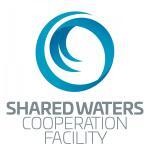Shared Waters Facility: IUCN joins new partnership on transboundary water cooperation
IUCN and partners joined forces in a new partnership designed to strengthen cooperation in transboundary basins. The newly established ‘Shared Waters Cooperation Facility’ is a global partnership that will strengthen cooperation on shared waters through supporting stakeholders in navigating and negotiating agreements over water resources.

Photo: ©Shutterstock/Daniel Prudek
 Photo: ©IUCN Water
Photo: ©IUCN Water
The new Facility will improve cooperation through initiatives that aim to accelerate existing approaches that have slowed, or which have halted, due to various challenges or impediments. Through data sharing and mapping, conflict resolution, ecosystem management, regulatory reform and financial mobilisation the Shared Waters Facility will improve inclusive and accountable multi-level governance approaches in shared waters.
“Through the IUCN Building River Dialogue and Governance ‘BRIDGE’ programme, we have seen how peace and security, economic growth and environmental protection are enhanced when the focus shifts from reactive fixes and national priorities to proactive dialogue and international cooperation. This new Shared Waters Cooperation Facility is purposely designed to help unblock situations in basins where cooperation has stalled or where new approaches are required" said James Dalton, IUCN Director Global Water Programme.
The Shared Waters Cooperation Facility will initially focus on basins in Asia and Central Asia:
1. The Greater Mekong Region;
2. The Karatag River, a tributary of the Amu Darya River shared between Tajikistan and Uzbekistan;
3. The Meghna basin, shared between India and Bangladesh, part of the Ganges-Brahmaputra-Meghna basin
 Photo: ©Shutterstock/Daniel Prudek
Photo: ©Shutterstock/Daniel Prudek
Between 1948 and 2008 over 2,600 instances of international conflict occurred over water, according to Oregon State University. A recurring challenge to cooperation between upstream and downstream countries is linked to infrastructure development, for example when an upstream country constructs a dam without establishing an agreement on how to share the altered water flow or energy generated.
Cooperation is increasingly vital as hydropower gains in popularity as a low carbon energy solution. However, climate change impacts are causing water scarcity leading to growing competition over water. Oregon State University Professor Aaron Wolf says the conflict is most likely when change outpaces institutional capacity to adapt: “Water conflicts can reach such intensity that it may take years or even decades to work towards political de-escalation. This projects seeks to catch potential tensions before they become intractable, allowing for dialogue and agreements that can prevent conflicts from escalating to begin with."
Research by the International Water Management Institute (IWMI) on transboundary rivers has focused on understanding how shared water resources can best be managed in a peaceful way. For example, IWMI researchers have looked at what institutions best suit particular, developing-country needs. Success in collaborative agreements and institutions has the potential to improve the lives of millions of people who live within the catchments of the world’s major rivers, lakes and aquifers.
The Facility is designed to provide appropriate expertise that can facilitate dialogue and joint action where cooperation has slowed or stopped. Partnership lies at the centre of the Facility in order to respond to the needs of stakeholders and to shift shared water challenges to shared water solutions.
Further information can be found here: www.sharedwatersfacility.org
Partner websites:
Oregon State University: https://transboundarywaters.science.oregonstate.edu/content/transboundary-freshwater-dispute-database
IUCN Water programme: https://www.iucn.org/theme/water
IWMI: https://www.iwmi.cgiar.org/
